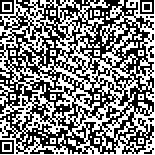| 摘要: |
| [摘要] 目的 评估无精子症患者血清和精浆中的抗精子抗体检测在区分梗阻性无精子症与特发性无精子症的临床价值。方法 回顾性分析2010-01~2013-12住院行睾丸附件探查手术的204例无精子症患者的临床资料,根据手术探查的结果分为特发性无精子症组(A组)106例和梗阻性无精子症组(B组)98例,比较两组对象术前检测的血清和精浆中抗精子抗体的结果,分析血清和精浆抗精子抗体的检测在区分梗阻性无精子症与特发性无精子症的临床价值。结果 204例血清抗精子抗体的总阳性率为9.31%,精浆抗精子抗体的总阳性率为6.86%。A组术前血清和精浆抗精子抗体阳性率分别为7.55%和4.72%,其中IgG为2.83%和1.89%、IgM为1.89%和0.94%、IgA为2.83%和1.89%。B组的术前血清和精浆抗精子抗体阳性率分别为11.22%和9.18%,其中IgG为6.12%和4.08%、IgM为3.06%和2.04%、IgA为2.04%和3.06%。两组间比较差异无统计学意义(P均>0.05)。结论 无精子症患者的血清和精浆均有抗精子抗体阳性表达,但两者在区分梗阻性无精子症与特发性无精子症的灵敏度不高,临床上无法通过血清和精浆抗精子抗体的检测来判断无精子症患者的临床分型。 |
| 关键词: 抗精子抗体 无精子症 精浆 血清 |
| DOI:10.3969/j.issn.1674-3806.2016.01.04 |
| 分类号:R 698+.2 |
| 基金项目:广东省人口和计划生育委员会科研项目(编号:20132007) |
|
| The clinical value of detecting antisperm antibody in azoospermia patients |
|
LIU Huang, ZHANG Zhi-xing, ZHENG Hou-bin, et al.
|
|
Family Planning Research Institute of Guangdong, Guangzhou 510600, China
|
| Abstract: |
| [Abstract] Objective To evaluate the clinical value of detecting antisperm antibodies of seminal plasma and serum to distinguish obstructive azoospermia from idiopathic azoospermia.Methods The clinical data of 204 cases with azoospermia and testicular appendage surgical exploration in our hospital from January 2010 to December 2013 were retrospectivly analyzed. According to the results of the surgical exploration,the patients were divided into group A(idiopathic azoospermia, n=106) and group B(obstructive azoospermia, n=98). The antisperm antibodies of seminal plasma and serum before the detection were compared between the two groups, and the clinical value of antisperm antibodies in the seminal plasma and serum was analyzed to differentiate the obstructive azoospermia from the idiopathic azoospermia.Results There were 9.31% of the all 204 azoospermia patients with the antisperm antibodies in serum positive, and 6.86% in seminal plasma; these data were respecticaly 7.55% and 4.72% in group A, among which IgG-AsAb were 2.83% and 1.89%, IgM were 1.89% and 0.94, IgA were 2.83% and1.89%. and the data were respecticaly 11.22% and 9.18% in group B, among which IgG-AsAb were 6.12% and 4.08%, IgM were 3.06% and 2.04%, IgA were 2.04% and 3.06%. There were no significant differences in the counterpart indicators between the two groups(P>0.05).Conclusion Antisperm antibody positively expresses in both the serum and seminal plasma of azoospermia patients. However the sensitivity is not high for the antisperm antibody in seminal plasma and serum to differentiate the obstructive azoospermia from the idiopathic azoospermia. The clinical types of azoospermia can not be differentiated by detecting the antisperm antibodies in seminal plasma or serum. |
| Key words: Antisperm antibody Azoospermia Seminal plasma Serum |

